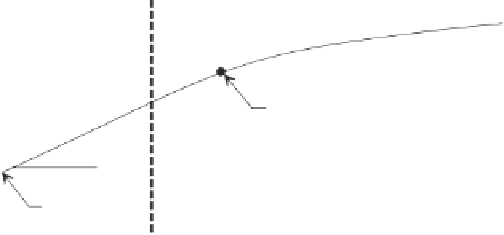Environmental Engineering Reference
In-Depth Information
100
Transition
effect zone
Boundary
effect zone
80
Residual
suction value
60
Residual zone
of
saturation
40
Air-entry
value
20
0
10
6
1
10
100
1000
10,000
100,000
Soil suction, kPa
(a)
Linear
zone
Nonlinear
zone
Plastic clays
A
Silts
b
f
= f
'
b
= f¢
f
Cohesionless
Soils (Sands)
Matric suction (
u
a
-
u
w
), kPa
(b)
Figure 12.4
Relationship of SWCC to shear strength envelope for various soil types: (a) various
zones along SWCC; (b) variation in shear strength envelopes for different soils in different zones
of saturation.
unsaturated soil and then on the application of shear strength
to practical engineering problems.
Shear strength equations have also been suggested for des-
cribing critical state shear strength with respect to soil suction.
The critical shear strength equations are not presented herein.
The SWCC plays an important role in the estimation of the
unsaturated shear strength of a soil. The air-entry value of
the soil,
ψ
aev
, and the residual suction,
ψ
r
, are pivotal points
that can be identified on the SWCC. These pivotal points sub-
sequently influence the form of the proposed shear strength
equations. Some estimation shear strength equations cease
to apply at residual suction conditions while other equations
apply for the entire soil suction range (Fig. 12.8). Most shear
strength equations fall into either the best-fit category or the
estimation category. The D.G. Fredlund et al., (1996) equation
was originally a best-fit equation where the
κ
parameter was
determined through use of a regression analysis. Later, Gar-
ven and Vanapalli (2006) correlated the
κ
parameter to the
plasticity of the soil with the result that the shear strength
equation now qualifies as an estimation equation.
12.2.3 Some Fitting Equations for Shear Strength
versus Soil Suction
A brief summary is first given of some best-fit shear strength
equations before a more detailed presentation is provided on
equations that have been proposed for the estimation of the
unsaturated soil shear strength. The Lee et al., (2005) best-
fit unsaturated soil shear strength equation is discussed at
the end of this section.
12.2.3.1 Fredlund et al., (1978) Linear Shear Strength
Equation
Fredlund et al., (1978) proposed a shear strength equation
for unsaturated soils based on two independent stress state
variables. The friction angle associated with net normal
stress,
φ
, was assumed to be independent of soil suction
and the friction angle,
φ
b
, was also assumed to be indepen-
dent of net normal stress. The shear strength equation was
linear in form and was the basis for subsequent nonlinear
equations that were to follow. The linear form of the
shear strength equation proposed by Fredlund et al. (1978)


























Search WWH ::

Custom Search